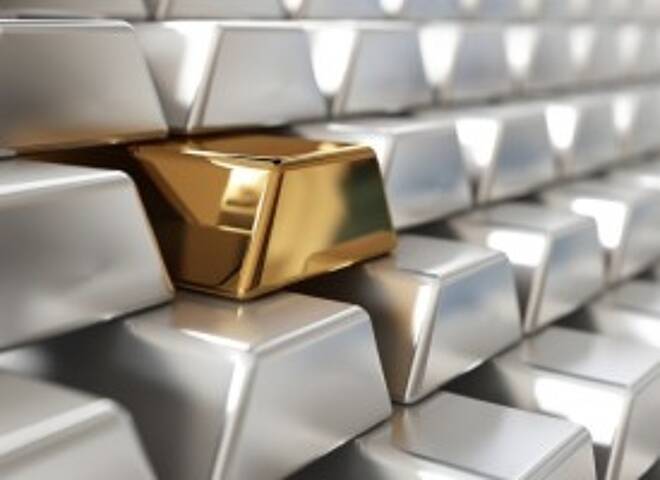Advertisement
Advertisement
Silver Is Often Overlooked Lost Between Precious Metals & Base Metals
By:
When you mention precious metals, the mind automatically focuses on gold just like when you think about precious gems you think of diamonds. After gold we
When you mention precious metals, the mind automatically focuses on gold just like when you think about precious gems you think of diamonds. After gold we might think about platinum which has always been the higher standard than gold even though in today’s market gold costs more than platinum. The metal that is overlooked is silver, many traders, investors and speculators think of silver as a second rate precious metal since it has more value in industrial use and for personal consumption such as silver plate or silver tableware it is thought of lesser than the other metals. A silver goblet is not as valuable or in demand as the yellow metal drinking glass. But the fact is that silver is a lot more useful metal that flows between precious metals and industrial metals serving both groups and therefore increasing its demand.
Silver is a precious metal because it is rare and valuable, and it is a noble metal because it resists corrosion and oxidation, though not as well as gold. Because it is the best thermal and electrical conductor of all the metals, silver is ideal for electrical applications. It’s antimicrobial, non-toxic qualities make it useful in medicine and consumer products. Its high luster and reflectivity make it perfect for jewelry, silverware, and mirrors. Its malleability, which allows it to be flattened into sheets, and ductility, which allows it to be drawn into thin, flexible wire, make it the best choice for numerous industrial applications. Meanwhile, its photosensitivity has given it a place in film photography.
Silver soared to a multiyear high this week and is opening the month at a 2015-16 record. Silver added 640 points in the morning session to exchange at 19.263. Silver gained 3.44% while gold is up less that 1% at 1332.95.
In recent years, the rise of the silver price has come almost exclusively from investment, or monetary demand. But there have been periods of time when silver’s industrial demand drove the price of the white metal higher. In the period between roughly 1900 and 1970, industrial demand for silver increased over 4 times- from 100 million to 400 million ounces. Once again silver is seeing a new era with increasing demand for computer chips to window coatings. Modern technologies continue to find more uses for the amazing metal.
The reasons for this growth should not be hard to understand: silver is in many ways a more versatile industrial metal than copper. James Blanchard was fond of pointing out how the average American used several items with silver in it even before he or she left for work in the morning: silver is in your alarm clock, wall switch, wristwatch, bathroom mirror, computer, cellphone, I-Pad, the plumbing in your bathroom or kitchen, your microwave, water purifier, dishwasher, and, especially if you wear polyester, it is used to make many forms of clothing.
Silver is used in computers and cell phones. Batteries need silver for their cathode or negative side. Silver oxide cells are used in cameras, toys, hearing aids, calculators, and even though they are expensive, silver oxide cells are seen as a more environmentally friendly version of the lithium-ion batteries used in everything from consumer electronics to electric cars.
There are few assets in the financial industry that have the ability to spark a debate quite like precious metals, and this is definitely true for silver. While the bearish view on the precious metal is understandable, the truth is that the bears are sorely mistaken. There are three factors that you have to keep in mind when it comes to assessing the price of silver — and all three factors are screaming: “Buy the precious metal…Today.” The supply and demand factor is the first, silver is in limited supply. Silver being a precious metal there is a silver/gold ratio which could push investors to silver when prices are escalating and lastly economic and market conditions. Finally, silver like gold is considered to be a safe haven investment. Therefore, the value of the commodity moves inversely with economic and market developments.
About the Author
Barry Normanauthor
Did you find this article useful?
Latest news and analysis
Advertisement
